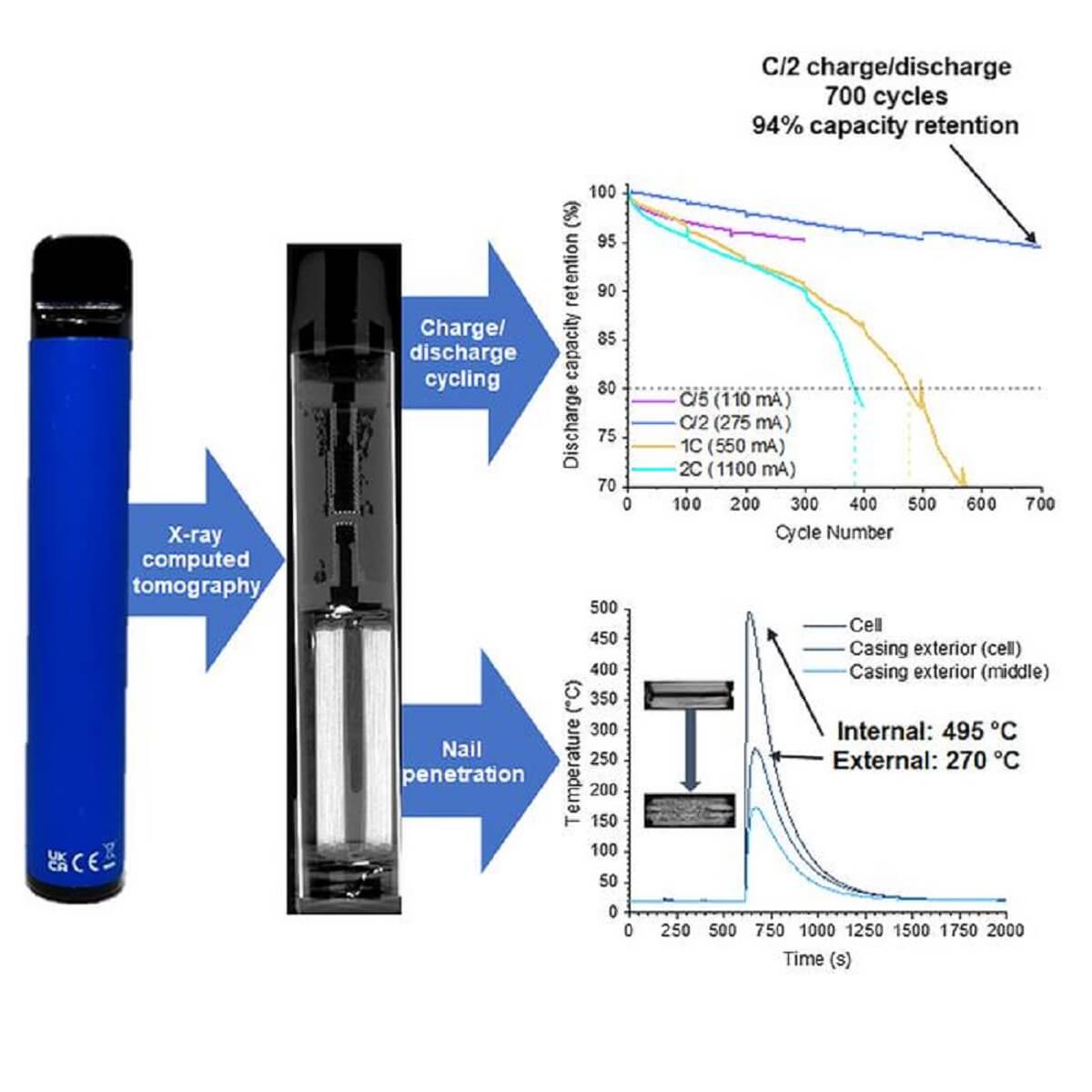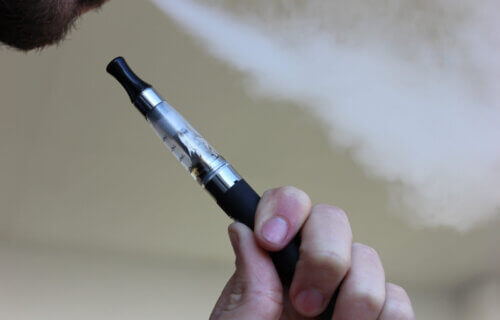OXFORD, England — Disposable vape pens are posing a “growing” environmental threat, new research warns. Scientists have discovered that single-use e-cigarettes contain batteries that last for hundreds of cycles even after being discarded.
The study was conducted by a team from University College London (UCL) and the University of Oxford, with support from The Faraday Institution.
“The surprise for us were the results that pointed toward just how long these batteries could potentially cycle,” says Professor Paul Shearing, from the University of Oxford and UCL, in a media release. “If you use a low charge and discharge rate, you can see that for over 700 cycles, you still have more than 90 percent capacity retention. That’s a pretty good battery, actually. And these are just being discarded. They’re being chucked on the side of the road.”
The popularity of disposable e-cigarettes in the United Kingdom has skyrocketed since 2021. A survey notes an 18-fold increase from January 2021 to April 2022, with usage among 18-year-olds soaring from 0.4% to 54.8% in just 15 months. This surge has led to pressing waste management issues, with approximately 1.3 million of the devices discarded weekly in the U.K.

Consequently, around 10,000 kilograms (over 22,000 pounds) of lithium from e-cigarette batteries end up in U.K. landfills every year. This poses a significant environmental hazard, with the risk of toxic nickel, cobalt, and organic solvents contaminating nearby water sources.
“Early on, we got the notion that the batteries going into these e-cigs were likely to be rechargeable batteries,” Prof Shearing notes.
Previous studies hadn’t fully explored the longevity of the lithium-ion batteries in these products.
To investigate, the research team removed batteries from disposable e-cigarettes and tested them under controlled conditions. They employed tools and techniques commonly used in studying electric vehicle batteries and other devices, including microscopic examination and X-ray tomography to analyze their internal structures and materials.
By repeatedly charging and discharging the batteries, the researchers assessed their long-term electrochemical performance. They discovered that these batteries could be recharged “sometimes many hundreds of times.”
“As a bare minimum, the general public needs to be aware of the types of batteries going into these devices and the need to properly dispose of them;” says Professor Shearing. “Manufacturers should provide the ecosystem for reuse and recycling of e-cigarette batteries, and also should be moving towards rechargeable devices as the default.”
Additionally, his team is researching more sustainable battery chemistries, like post-lithium ion, lithium sulphur, and sodium ion batteries, and developing selective recycling methods to minimize cross-contamination of components.
To tackle challenges throughout the battery supply chain, Prof Shearing suggests considering the full life cycle of batteries in all applications.
“Whether it’s a vape battery or one for an electric helicopter, understanding the complete life cycle of a battery device is crucial,” he adds.
The study is published in the journal Joule.
South West News Service writer Stephen Beech contributed to this report.

EU has proposed a ban on vapes, and UK Local Government Association would like to see disposable vapes banned in 2024. (‘vape pens’ seems a euphemism, associating them with a familiar and intentionally harmless object). I wrote to my local Member of UK Parliament a YEAR ago making virtually the same arguments that are being made now in mainstream media like the Times and Guardian re – big tobacco, nicotine addiction, lithium batteries, multiple plastic parts of different types that are difficult or impossible to recycle, and the casual littering ,adding to the mass of use-once-and-throw-away stuff and plastic that has to be disposed of at public expense and environmental risk. I added the antisocial nuisance of clouds of other people’s vape, albeit not quite as noxious as cigarette fumes.
If these PERNICIOUS PRODUCTS are banned that will be a message to the amoral tobacco industries that this kind of cynical exploitation is no longer acceptable in a modern environment- and health-conscious civilisation. However, seeing the glacial decline in cigarette smoking, and its promotion in countries with less educated populations, I will believe it when I see it. Let’s see them banned in public places at least. As an example, both London, and Brighton where I live, have Ultra Low Emission Zones. In the middle of Brighton’s ULEZ is a square where shoppers and bus passengers congregate. Yet its air is constantly polluted with cigarette and vape fumes. Who are ULEZ kidding?